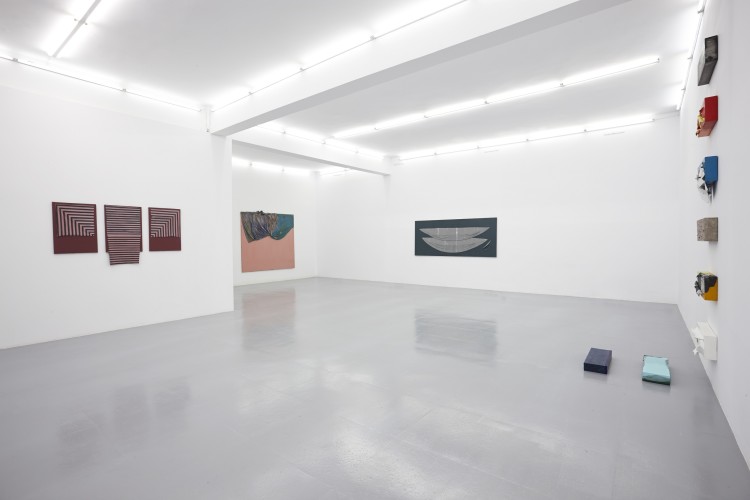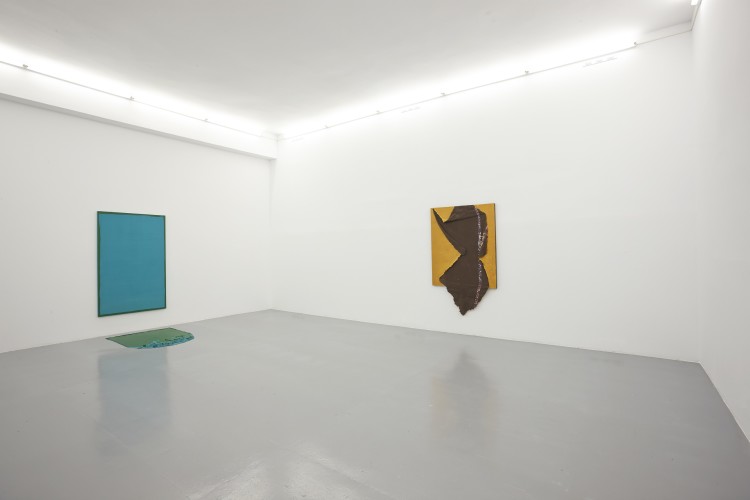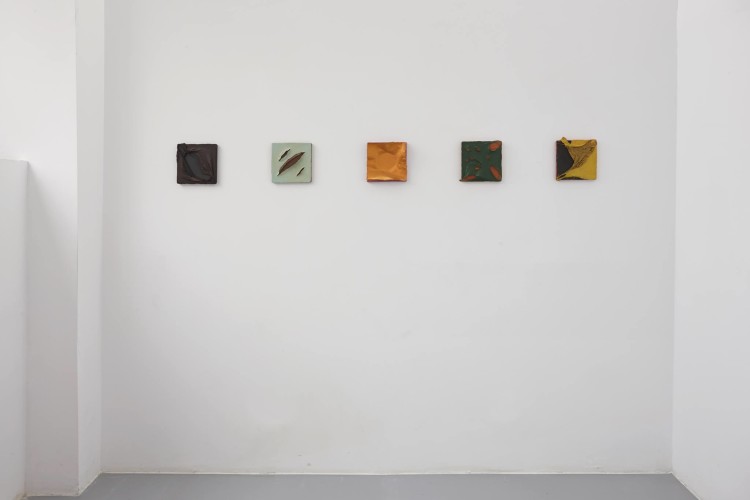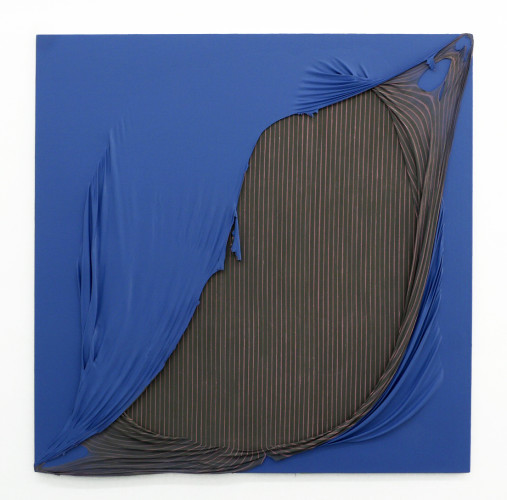(As I get off at Piața Muncii metro station, I fumble my way to the crossroads where the Sintaxa factory is located. I barely find the stairs that should take me to Suprainfinit. Flashback – I.L. Caragiale at Mânjoală’s inn: “What a bed! such curtains! such walls! what a ceiling! all as white as milk” – when I was in school, I would imagine a sort of modern minimalist interior… My first impression (because I couldn’t make it to the art show at the gallery’s opening): Suprainfinit is a white cube gallery par excellence, of an immaculate white that I’ve never had the chance to witness before (except in photos). I can’t help but see this as a techno-mystical transformation of this once industrial space…).
Young artist Andreea-Lorena Buțincu’s first solo show, “Skinned” (a title that does not have nearly as many connotations in Romanian), is an ambiguous success in the sense that it seems to be asking the viewer for a bivalent reception, but also in the sense that the works themselves have an “innereign” vibe to them. In an unsettling way (and if it wasn’t for this unsettling feel, we would be tempted to look at them only once), these “sculptural”, “installation-esque” paintings, as if they were some alien artifacts that we believe to be inactive, require, through their immobility, a scientific curiosity rather than a contemplative stance.
I don’t know if Andreea-Lorena Buțincu is at all aware of this, but “Skinner” perfectly fits in with the current boom in abstract art. Alberto Burri and Frank Stella recently had two retrospectives, and the auction house record is held by Lucio Fontana and other various Korean and Japanese painters which were grandiosely appropriated (Kazuo Shiarga is seen as a “Japanese Pollock” and so on). But then we have a lot of the young painters from recent years who try to opportunistically adapt to this horizon of expectancy and end up recycling the glory of American abstract art from the 50s-60s ad infinitum, which ultimately gives birth to derogatory terms such as “zombie formalism” (Walter Robinson). Moving on from the horizon of expectancy of those outside the field, it is widely believed that we’ve reached a new type of academism that, as is evident in recent art shows like Forever Now at MoMA, can’t be a good thing, not even for those who still prefer abstractionism.
On the other hand, there has been a tendency in recent years – “provisional painting” (a term coined by Raphael Rubenstein) or “the new casualism” (as Sharon Butler would have it), which, in a “weak” modern logic, manages to close a path that was opened by Miró’s “antipaintings” and the (post)minimal approach of Eva Hesse and Richard Tuttle (who seems to have generated a lot of emulation after his retrospective at Whitney, “The Art of Richard Tuttle”, from over a decade ago), a type of assumed experimental “failure” and “clumsiness” in which the asymmetrical and the imperfection add up to the so-called openness of “art’s aesthetic regime” (as Rancière would say).
The works that make up “Skinned” do not permanently fit into any of these categories. There is a lack of playfulness, there are no serious digressions from the format of the rectangular canvas that could truly be a reminisce of “the new casualism”, but these works are neither banal imitations of Lucio Fontana (whose technique does not reach full maturity until Five days of work) or early Frank Stella (that is easily recognizable in Stripes and corners). I hesitate in choosing between an expressionist interpretation (I am thinking of a visceral range, although it is not our viscera we are dealing with here) and a formalist one (stimulated by the way in which the “paintings” were ultimately exhibited).
To sum it up: there is a paradox of the spectacular within “Skinned”. The making-of for the work First Steps, presented as separated from the gallery, is not part of the art show per se and documenting the performative dimension of the birth of these paintings (frozen at the Suprainfinit gallery) only elevates the author’s position. The rational possibility is suppressed: we cannot climb inside the painting (as with Yoko Ono’s Bag Piece) and cut into raw paint, it is not recommended that we intervene in the – say – eventual degradation of the works. The indifference, the aesthetic disinterest is like an imposing regime which fortunately has an arbitrary quality to it, which is revealed here in all its splendor.
Andreea-Lorena Buțincu’s art is presented as static for the time being (which comes as a paradox if you think about the semi-random component of the peeling process), endowing the works with both “virtues” and “limitations”. Her art is open to a “poetic” reading, but it overshadows its own quality of usage as a “theatrical” object, making itself “absorbent” (see Michael Fried’s distinction between absorption and theatricality) in this case. In other words, I had the feeling that “Skinned” is in the limbo that separates traditional painting and trans-aesthetic possibilities (prefigured by another tradition, the avant-garde) which appear as equally tempting for the artist. It remains to be seen which path (or paths) her future work will take.
Andreea-Lorena Buțincu, SKINNED was between the 19th of November – 23rd of January at the Suprainfinit Gallery in Bucharest.
POSTED BY
Yigru Zeltil
Yigru Zeltil (pen name of Florin Ionescu) was born in 1992 in Constanța. He graduated from the Literature department of the Ovidiu University in Constanța. He is the author of several literary magaz...
yigruzeltil.blogspot.ro





Comments are closed here.